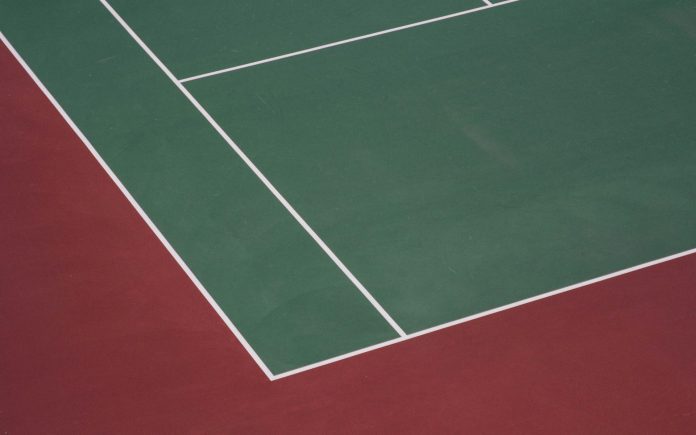Multi Use Games Areas, more commonly known as MUGAs, are an increasingly popular solution for schools, sports clubs, councils, and leisure centres across the UK. These versatile outdoor sports areas can support a wide variety of activities while making the most of limited space and budget. But one of the most important factors when designing or choosing a MUGA is selecting the right surface—and understanding which sports each one supports best.
In this guide, we’ll explore which sports can be played on a MUGA and how that depends on the surface type installed. Whether you’re planning a new build or upgrading an existing area, this breakdown will help you make informed decisions that meet your usage goals and performance needs.
What Is a MUGA?
A MUGA (Multi Use Games Area) is a purpose-built sports surface that can accommodate multiple sports and recreational activities in one designated space. These areas are often enclosed with fencing and marked out with multiple line markings to support different sports on the same pitch.
MUGAs are available in several surface types, each designed for different usage levels, sports requirements, and budget considerations. The most common MUGA surfaces include:
- Tarmac (Type 1)
- Polymeric rubber (Type 3)
- Needlepunch synthetic turf (Type 4)
- 3G artificial grass (Type 5)
Each Novasport surface supports a specific set of sports, which we’ll break down below.
Tarmac MUGA Surface (Type 1)
Tarmac MUGAs are made from porous macadam and are one of the most cost-effective and low-maintenance options available. These surfaces are ideal for schools and community use due to their durability and consistent playing characteristics.
Best suited for:
- Basketball
- Netball
- Tennis
- Five-a-side football (light use)
- General playground activities
Tarmac offers a hard, even surface with excellent ball bounce, making it ideal for sports that require accuracy and fast-paced movement. However, it’s less suitable for contact sports or high-impact games where shock absorption is important.
Considerations:
Tarmac can become slippery when wet and isn’t the most forgiving on joints, which is why it’s generally not used for sports like rugby or full-contact football.
Polymeric Rubber MUGA Surface (Type 3)
Polymeric MUGA surfaces are made using EPDM rubber with a resin binder, forming a cushioned surface with excellent shock absorption. This makes it a popular choice for sports that require comfort underfoot and lower impact on joints.
Best suited for:
- Basketball
- Netball
- Tennis
- Athletics (running, sprint drills, circuits)
- Multi-skill PE activities
Polymeric surfaces are great for primary and secondary school use where safety and multi-activity use are key priorities. They are often selected when budget allows for a more performance-focused installation than tarmac.
Considerations:
They are less ideal for studded footwear or sports that involve sliding or aggressive turning, such as football or rugby, as this may damage the surface over time.
Needlepunch Synthetic Turf (Type 4)
Needlepunch synthetic turf is a hardwearing, textured artificial grass surface designed to accommodate multiple ball sports with minimal wear. It’s needle-punched for durability and typically sand-filled to improve grip and ball control.
Best suited for:
- Hockey
- Tennis
- Five-a-side football
- General PE and school sports
- Cricket practice
Needlepunch surfacing is often used in schools where a broad range of sports is played across one pitch. It offers better cushioning than tarmac but still maintains good ball performance.
Considerations:
Although it’s durable, it’s not designed for high-level contact sports or competitive adult football.
3G Artificial Grass MUGA Surface (Type 5)
3G synthetic grass is the go-to surface for sports where a realistic ball roll and cushioned feel are essential. It’s typically filled with rubber crumb infill and is the most performance-focused MUGA surface.
Best suited for:
- Football (including 7-a-side and 11-a-side on larger pitches)
- Rugby (with shock pad layer)
- Touch rugby
- Recreational American football
3G surfaces are favoured by sports clubs and facilities where football is the primary activity. They provide a safe and consistent surface for regular use and meet FA and World Rugby standards when installed correctly.
Considerations:
Line markings for multiple sports can be more difficult on 3G due to the turf fibres, so it may be better suited to single or dual-sport areas rather than full multi-sport use.
Choosing the Right Surface for Your MUGA
When planning a MUGA, it’s essential to consider:
- Primary sports: Which activities will be played most often?
- User group: Will it be used by children, teens, or adults?
- Frequency of use: Daily school sessions or occasional weekend matches?
- Budget: Some surfaces cost more but offer longer lifespan and higher performance.
- Maintenance: Tarmac is low-maintenance, while artificial turf needs more upkeep.
Matching your surface to your sport requirements ensures your MUGA performs well, lasts longer, and delivers a better experience for its users.
Sports Compatibility Summary by MUGA Surface
| Surface Type | Best Suited Sports | Not Recommended For |
| Tarmac (Type 1) | Netball, Basketball, Tennis, PE | Rugby, Full-contact football |
| Polymeric (Type 3) | Netball, Tennis, General PE, Athletics | Football with studs, Rugby |
| Needlepunch (Type 4) | Tennis, Hockey, Football (light use), Cricket Practice | Rugby, High-impact contact sports |
| 3G Synthetic (Type 5) | Football, Rugby, Touch Rugby | Netball, Tennis, Multi-marked areas |
Final Thoughts
MUGAs are a smart investment for any organisation looking to maximise outdoor space and promote active lifestyles. But not all MUGAs are the same, and the surface you choose has a direct impact on what sports can be played and how well they perform.
Whether you’re planning a school sports area, a community pitch, or a facility for structured training, understanding surface types ensures you get a solution that fits your needs—without wasting money or compromising play quality.



 Bitcoin
Bitcoin  Ethereum
Ethereum  Tether
Tether  XRP
XRP  Wrapped SOL
Wrapped SOL  USDC
USDC  Lido Staked Ether
Lido Staked Ether  TRON
TRON  Cardano
Cardano  Avalanche
Avalanche  Toncoin
Toncoin